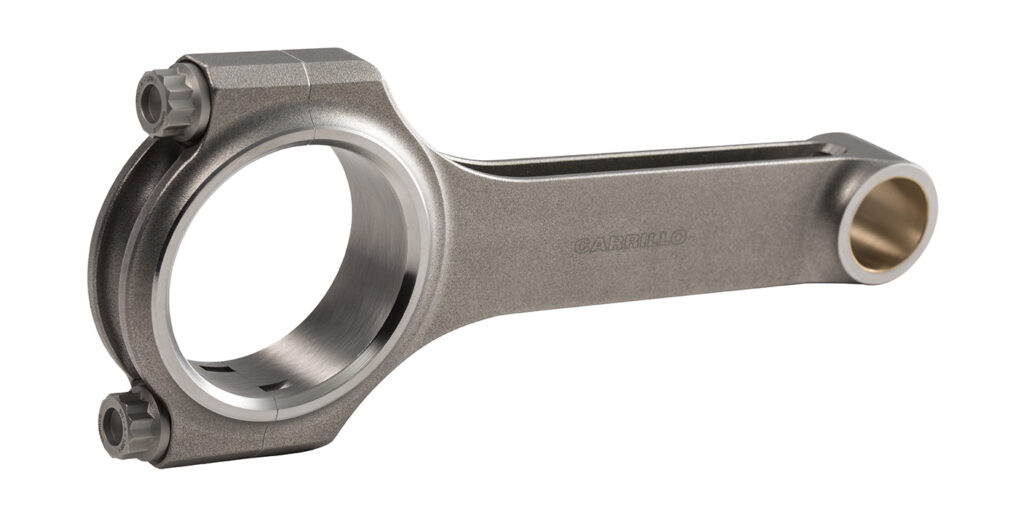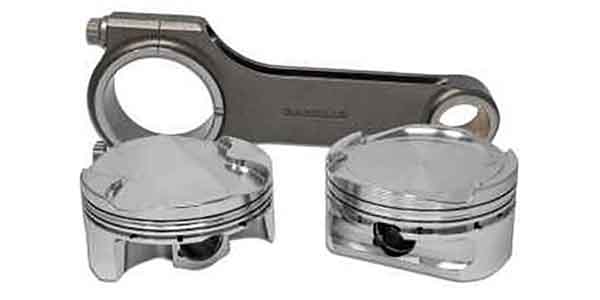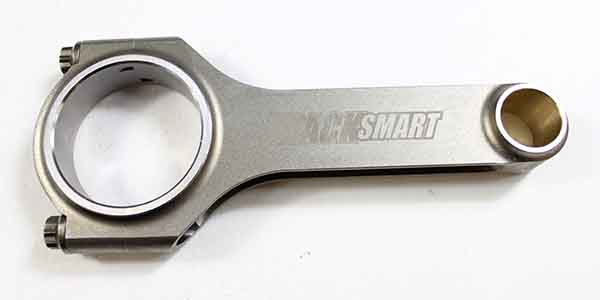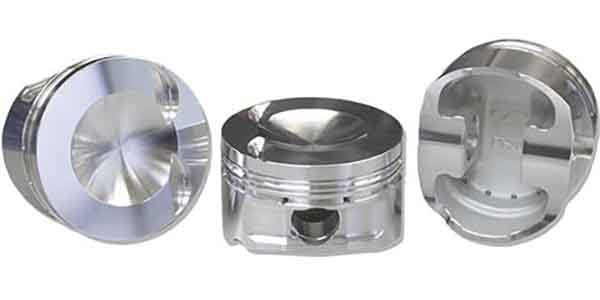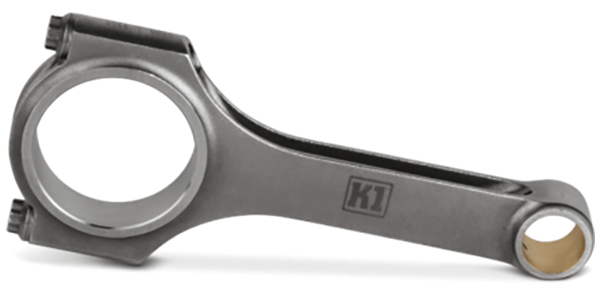Why is technology so interesting? For me, it’s because it always changes. No matter what it is, and no matter how good we make something, we always strive to make it better. There’s also proven technology that comes from testing, but more importantly, real-world use and abuse – an example of which is connecting rods.
I don’t know that connecting rods endure any more or less abuse than any other engine component, but it’s certainly in a different way. A brief look into the forces that play on a connecting rod made me feel more like I was entering advanced scientific mathematics than learning about engine components, but I know enough to understand that it’s all about science and math, so I wasn’t surprised.
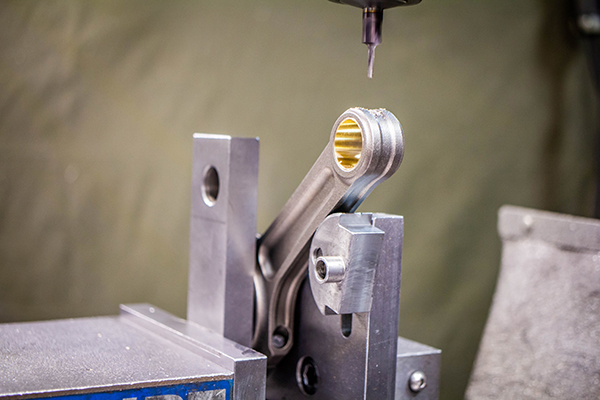
Rather than trying to make sense of that, I thought it easier to get the viewpoint of those who make their living on technology and get a glimpse into the latest aspects of connecting rod design. The first leg of my quest for information led me to CP-Carrillo.
Carrillo Industries, known for their high-performance connecting rods since their founding in 1963, was acquired by CP Pistons in 2008, and have been known as CP Carrillo since. Their rich racing history and their name is a familiar one to engine builders.
Christoph Wachmann gave me a run-down on their connecting rod development. Their most recent advances in connecting rod technology for drag racing are new, high-strength aluminum alloys, heat treatments and process routes. For various steel connecting rod applications, high-strength steel alloys, heat treatments and lightweight designs are among the most recent new developments. “And last but not least are new design approaches for optimization of the system as a piston-connecting rod assembly,” Wachmann added.
Historically, the most common failures they see are related to a faulty bolt/assembly process resulting in insufficient bolt clamp load. They also see beam failure through increased peak cylinder pressure events, the result of knocking or timing issues.
When engineering technology for new rods, they start with a design and their testing routine includes finite element simulation, pulsing tests and engine tests, repeated over and over again as needed. “Pulse testing can give very good feedback on potential structural issues,” Wachmann says. “Engine testing is still needed for verification of any potential dynamic issues and the wear of contact faces and bearings.”
The biggest challenge of connecting rod design, explained Wachmann, is finding the best compromise of light weight, durability and system performance with the piston and crankshaft assembly, and trying to find that compromise within the limited available space.
The design of connecting rods encompasses a number of factors including weight and strength. Wachmann noted that stiffness in certain areas is very important to prevent big-end ovalization and bearing wear, and their dynamic behavior (resonance frequencies) is also critical, making these important design aspects.
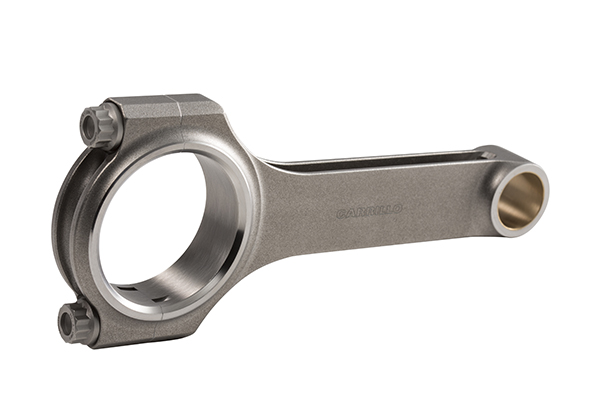
Wachmann said the most demanding performance segments they work with are Sprint Cars, Micro Sprint Cars and NHRA Top Fuel. A good majority of the feedback they receive that affects connecting rod design is centered around the available space within an engine that is affected by other components such as counterweights, oil jets and piston crowns.
“To stand out to engine builders, CP-Carrillo focuses on immaculate quality, repeatable durability and light weight,” Wachmann says.
What I learned from Wachmann gave me a good understanding of the world of connecting rod development, far more than complex mathematical formulas would have done, and I also had another leg of the journey to come.
I was able to get some insight on the subject from Trip Manley of Manley Performance Products. A name that is synonymous to the racing industry, Manley Performance was originally founded in 1966 by Hank Manley. Their first couple decades of business were marked by relationships with customers such as Don Garlits, Bo Laws, Joe Mondello, Bill Jenkins, and “Jungle Jim” Liberman.
Trip explained that manufacturing has been an area of heavy focus for them, and manufacturing process improvements have been huge including dynamic milling. Over the years, they have attributed incorrect fastener installation and spun bearings to the cause of the majority of connecting rod failures.
Manley Performance relies on feedback from their customers in order to build on a research and development plan for connecting rods. “We listen and learn from our hard-charging customer base who are pushing the limits of these engines and components,” Trip says.
Testing connecting rod designs is a multi-faceted operation at Manley Performance. “Finite Element Analysis (FEA) is certainly useful, but the key to FEA is to make certain all the input data and parameters are accurate,” Trip says. I asked if dyno testing was beneficial or if there was a common practice they used, and Trip explained that the testing process could vary depending on the rod itself and what its application was.
“This is not a ‘one shoe fits all’ process,” he says. “Previous experience and designs absolutely are useful and knowing the critical areas of high stress. Dyno testing is helpful, but ultimately the track is where true performance is measured.”
Although not a new material, Manley utilizes 300M alloy steel in its connecting rods when a 15-20% increase in strength is necessary, but builders need to keep the weight down, citing that weight and strength are two key factors of a connecting rod, but reliability is ultimately the most important.
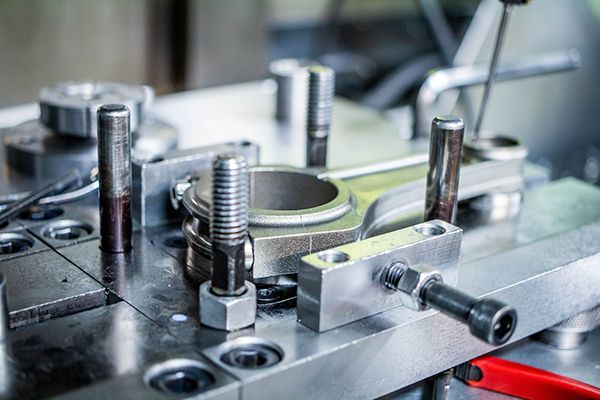
The 300M alloy steel is produced using a process called vacuum arc remelting (VAR). In simple terms, it produces a very high-quality metal. When metal is melted in an open furnace, gasses are dissolved into the liquid. This creates impurities in the metal and can affect the strength. When VAR is used, the metal is melted in a vacuum and under this vacuum the gasses escape from the liquid metal, preventing impurities and resulting in an incredibly strong material. It’s an expensive process, of course, but worth it when the application demands it.
Manley Performance offers connecting rods for all facets of the industry and says no single facet presents a bigger challenge, other than those that have space or clearance restraints to overcome.
“To stand out to engine builders, we focus on the proper strength-to-weight ratio, jewel-like machining, tight tolerances, and ultimately reliability,” Trip says. “Customers know they can count on Manley connecting rods.”
As in many aspects of the industry, engine builders and companies such as Manley and CP-Carrillo work together to develop products that perform. It looks like the human side just might be the most important part of developing connecting rod technology. EB

